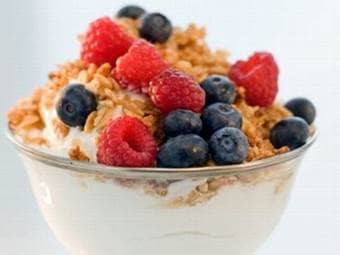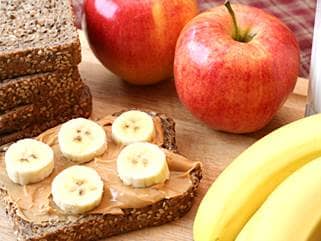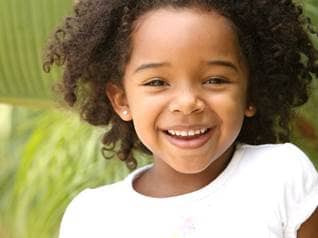
Make it a habit to put small servings of a few different foods on your children’s plates. If they finish the servings, they can always ask for more or try another food on the plate. At each meal, try to include servings of a fruit, a vegetable, a protein, a dairy, and a grain. The new MyPlate guidelines from the US Department of Agriculture recommend that half of a 6- to 7-inch plate be filled with fruits and vegetables according to their serving size recommendations.
Encourage your kids to pay attention to their bellies, and to alert you when they start to feel full. Forcing your children to finish all their food teaches them to overeat. The habit of overeating can override their ability to stop eating when they are full. Urge children to try each of the foods on their plates instead of finishing everything.
Daily portion amounts for ages 2-3 years
Vegetables – 1 cup
Fruits – 1 cup
Grains – 3 ounces
Meat and beans – 2 ounces
Dairy 2 cups
Daily portion amounts for ages 4-8
Vegetables – 1 1/2 cups
Fruits – 1 to 1 ½ cups
Grains – 4 ounces
Meat and beans – 3 to 4 ounces
Dairy 2 cups
Here are some easy portion sizes to help you prepare healthy meals for your kids:
Vegetables
¼ CUP OF VEGETABLES 4‐6 TIMES/DAY
3 asparagus spears
1/3 ear of corn on the cob
½ medium carrots or a 4 baby carrots
¼ large sweet potato
¼ medium white potato
½ cup raw leafy green vegetables
Grains
1 OUNCE OF GRAINS 3‐4 TIMES/DAY
1/2 cup of oatmeal or other hot cereal
1 cup of dry cereal
1/2 cup of cooked pasta or rice
1 slice of bread or 1/2 of an English muffin
4 plain crackers or 2 graham cracker squares
1 medium (4‐inch) pancake

¼ CUP OF FRUIT 4‐6 TIMES/DAY
¼ small apple (2.5” round)
¼ large banana (8” ‐ 9” long)
¼ cup of chopped, cooked, or canned fruit (i.e. applesauce, fruit salad, etc..)
¼ cup (2 ounces) of fruit juice
1/8 cup dried fruit
Protein
1 OUNCE OF PROTEIN 2‐4 TIMES/DAY
1 ounce of cooked lean meat, poultry, or fish
1/4 cup of cooked beans
1/4 cup of tofu
1 slice sandwich turkey
1 egg
2 Tablespoons of peanut butter
Dairy
½ CUP OF DAIRY 4 TIMES/DAY
½ cup milk (4 ounces)
½ cup yogurt (1 child‐size container)
3/4 ounce of natural cheese (like Cheddar, Monterey jack or Swiss)
1 ounce of processed cheese (like American cheese slices)
Portion tips
• The plate size for a child is 6” to 7” round
• Don’t heap food on plate, space between foods is healthy.
• 1 cup is the size of a baseball or a fist
• ½ cup is the size of a hockey puck or tennis ball
• ¼ cup is the size of a golf ball or ping pong ball
• ¾ ounce of cheese is the size of 3 stacked dice
• A 3‐ounce piece of cooked chicken, meat, or fish is about the size of a deck of cards.
Cheryl Tallman is the co-founder of Fresh Baby, creators of the award-winning So Easy Baby Food Kit, and author of the So Easy Baby Food Basics: Homemade Baby Food in Less Than 30 Minutes Per Week and So Easy Toddler Food: Survival Tips and Simple Recipes for the Toddler Years. Visit Cheryl online at www.FreshBaby.com.


